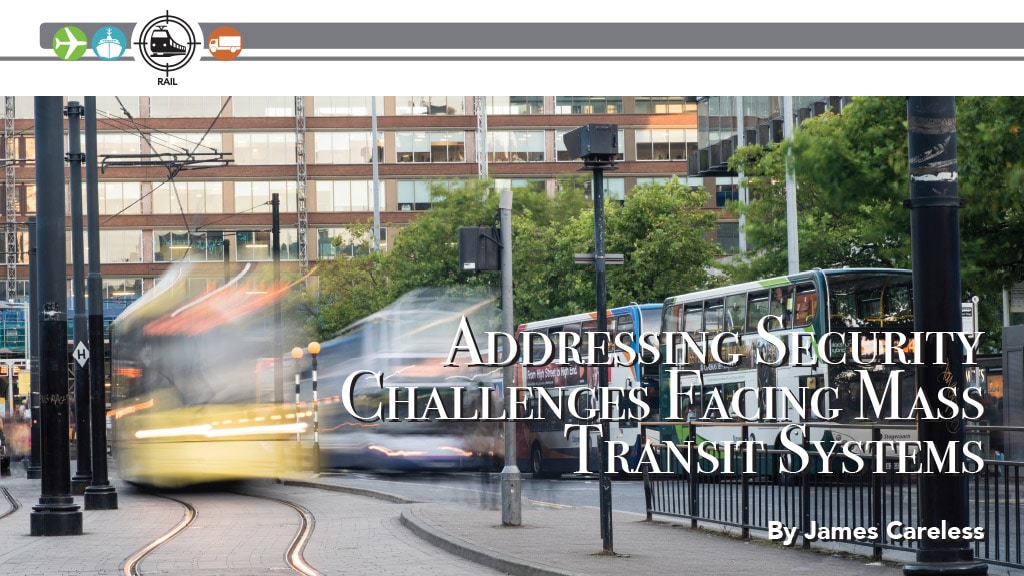Attacks on mass transit workers – specifically bus drivers – is unfortunately nothing new. As the front-line faces of government, bus drivers are regularly abused for requiring passengers to pay their fares or to stop harassing other passengers. Drivers are also being attacked as targets of opportunity by thieves, intoxicated persons, or unprovoked aggressors looking for someone to assault. Of course, passengers are also vulnerable to such attacks, but as lone figures of authority, bus drivers tend to be prime targets.
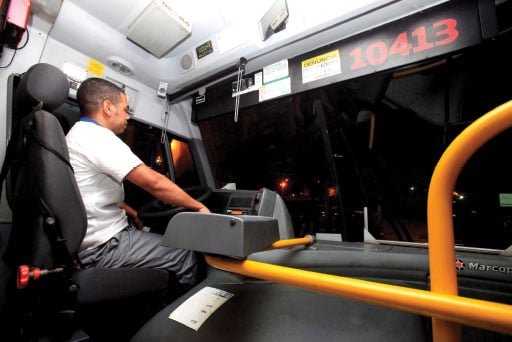
Made Worse By COVID
For drivers, this state of affairs was bad enough before COVID-19 occurred, but since then matters have gotten worse. This is because bus drivers in many jurisdictions now have to enforce masking requirements on passengers, some of whom respond to this restriction with violence.
A July 2020 story in the Miami Herald sums up the state of affairs then and now: “There have been over 400 violent encounters with MTA transit workers since Mid-April (2020), and 76 of those were defined as being ‘COVID-related’ meaning due to disagreements over social distancing or face cover mandates,” said the newspaper. “There have been at least four attacks on bus drivers this month in the US, including three in the space of two weeks.” These assaults included three young men attacking a San Francisco bus driver with a bat, two bus drivers being face-punched in New York City, and a passenger in Lubbock, Texas striking a driver with a two-by-four wooden board.
“Since September 11, 2001, secure cockpits guard people who fly commercial airplanes,” noted the document ‘Ripped from the Headlines: Bus Drivers Under Attack’, which was published by the Amalgamated Transit Union (ATU) that represents workers in the US and Canada. “Yet, public transit ‘pilots’ continue to be left vulnerable to vicious attacks. (And) Transit buses do not sell tickets requiring identification, so most violators are able to flee the scene of the crime and escape justice.”
Violence against bus drivers is a real problem for mass transit authorities and one that demands comprehensive action to bring this violence under control – just as federal authorities took action against terrorism following the World Trade Center attacks. Unfortunately, the two situations have not received equivalent attention from Washington or US state governments.
“Since September 11, 2001, secure cockpits guard people who fly commercial airplanes,” noted the document ‘Ripped from the Headlines: Bus Drivers Under Attack’, which was published by the Amalgamated Transit Union (ATU) that represents workers in the US and Canada. “Yet, public transit ‘pilots’ continue to be left vulnerable to vicious attacks. (And) Transit buses do not sell tickets requiring identification, so most violators are able to flee the scene of the crime and escape justice.”
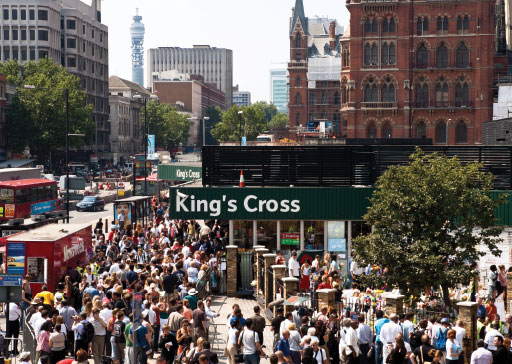
Terrorist Targets
In addition to the problems already noted, mass transit systems are also vulnerable to terrorist attacks. Although not as frequent as assaults on bus drivers, terrorist attacks are often far more deadly.
A case in point: “On 7 July 2005 terrorist bombs in London’s public transport system (buses and subways) killed approximately fifty people and injured hundreds,” said the 2020 document ‘Terrorism, Transit and Public Safety Evaluating the Risks,’ which was written by Todd Litman of the Victoria Transport Policy Institute and published in the Journal of Public Transit. “This is not the first such attack. In recent years bombs have also exploded on buses and trains in Israel, Madrid, Moscow and Paris, and in 1995 poison gas was released in Tokyo’s subway system, killing 12 people and making thousands sick.”
In these instances, the terrorists’ long-term goals were to cripple society by destroying public faith in mass transit security, while instilling its riders with a sense of dread to weaken and disrupt society in general. Among other things, this dread could motivate many riders to switch to cars for commuting, even though “transit is an extremely safe mode (of transport), with total per passenger-mile fatality rates approximately one-tenth that of automobile travel,” Litman wrote. In fact, “Transit terrorism would cause more total casualties and harm to society if individuals respond to attacks by shifting from public transit to less safe modes, or if decision makers respond by reducing support for public transit.” Such shifts would certainly play into a terrorist’s desire to upend the social order for their own political gain.
A Range of Challenges
The threat confronted by a driver being attacked by an aggressive passenger is different from that posed by a terrorist planting bombs on a bus. This means that there is no ‘one-size-fits-all’ solution to the issues of mass transit security. Different circumstances require different approaches.

This said, the approaches used by people purposely planning either to rob a driver or ignite a suicide vest do follow a common set of steps, said Amotz Brandes, Managing Partner with the security consulting firm Chameleon Associates. “First, they conduct surveillance on the attack site to mark potential targets and look for cameras and other monitoring systems,” he told TSI. “Next, they may test-run the crime to iron out any bugs, and then they actually commit the crime in line with their plans. This is why detecting such people on-site as they scope out their attack plans is a good way to deter them and enhance overall safety.”
This said, addressing the challenges of driver/passenger safety differs from reducing the vulnerability of mass transit system to terrorist attack. In this first situation, drivers can be lightning rods for public discontent, with their insistence on paying fares and/or wearing masks giving temperamental/stressed customers the opportunity to vent all kinds of unrelated frustrations. Similar rage may spur on terrorists to some degree, but generally their targets are institutional rather than personal.
This first situation isn’t helped by the drivers being on their own without any immediate backup at hand. “In many cases, there’s a breakdown in communication between management and frontline workers with drivers left feeling that, ‘nobody’s coming when I call, so I have to take matters into my own hands,” said Charlotte DiBartolomeo, CEO of the conflict resolution training firm Red Kite Consulting.“Drivers are also not trained to deal with someone with an opiate addiction or a person angry and desperate to keep a roof over their family’s heads. Yet here they are having to enforce the rules in these circumstances. Add in budget cuts that may reduce an organization’s support team, and today’s bus drivers feel that they have no choice but to actively defend themselves – a position that only escalates tensions during disputes with passengers, rather than defusing them.”
“Everyone is feeling powerless right now and trapped,” said DiBartolomeo. “This is why attacks on transit staff have been increasing, and it is also why drivers need to learn how to de-escalate conflicts with an overwhelmed public now more than ever before.”
“Everyone is feeling powerless right now and trapped,” said DiBartolomeo. “This is why attacks on transit staff have been increasing, and it is also why drivers need to learn how to de-escalate conflicts with an overwhelmed public now more than ever before.”
This feeling of unsupported vulnerability only makes matters worse for drivers during terrorist incidents. A bus driver who feels isolated and unprotected – and lacks training to deal with dangerous situations – is not equipped to deal with someone like a suicide bomber who intends to kill everyone on the bus.
In contrast, drivers who feel that they have real security backup and have been properly trained – as is the case in Israel – can deal with a range of dangerous situations effectively. “In Israel, the bus drivers are trained to spot the distinctive nervous behavior of suicide bombers,” said Brandes. “This has resulted in at least one instance where the driver identified a bomber on the street and actually closed the door in their face, thus preventing them from boarding and saving the passengers’ lives.”
A Range of Solutions
Clearly, mass transit is faced with a wide range of security challenges, with the consequences of ignoring them being too serious to bear. This is why “security is of primary concern for the public transport industry,” said Anne Mordret, senior manager of Security and Cybersecurity, Knowledge and Innovation with the Union Internationale des Transports Publics (UTIP, a.k.a the International Association of Public Transport with membership among the world’s mass transit agencies). “Passengers expect safe and secure transportation and so ensuring security is fundamental for confidence in the sector.”
In making this point, Mordret makes a distinction between ‘safety’ and ‘security’ in a mass transit context. “Safety is being secure against unintended threats while security is the protection against deliberate threats,” she explained. “Cybersecurity, threat monitoring, risk management, investing in technology, human resources and improving security procedures are some of the many ways the public transport sector can predict and prevent risks, ensuring the safety of its employees and passengers. UITP works with our international membership to address potential threats and provides a platform of exchange to help the sector advance with best practices gained through experience.”
Barriers
One solution endorsed by the UITP is to put drivers behind clear protective barriers, whether to help them stay safe from assaults, reduce the risk of being infected by aerosolized COVID-19 viruses expelled by infected passengers, or both. To do this prudently using government grants and/or transit agency funds, the key is to make data-driven decisions based on actual crime statistics. “For instance, if you know that you have more assaults on a particular bus line, then that’s where you should install barriers first,” said Polly Hanson, Senior Director of Security and Emergency Management at the American Public Transportation Association. “You can then install barriers on the other vehicles in lower crime areas as you get to them, or as the buses get replaced.”
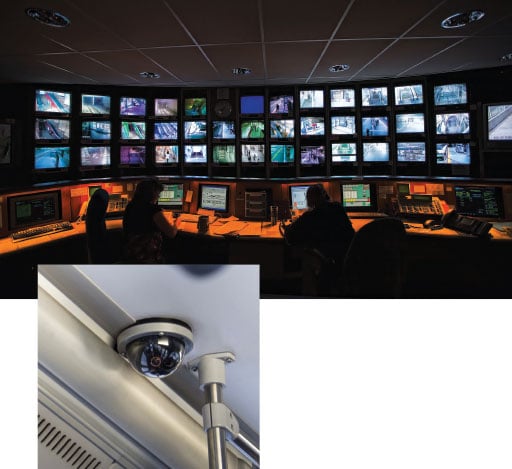
Video Monitoring
A second solution that can complement the barriers is to substantially improve the security monitoring and response to drivers in their buses, using the latest in surveillance equipment and broadband wireless connectivity products. According to the UITP, this means installing video cameras, microphones and silent alarms inside vehicles. This allows drivers to call for help fast, and for those at Transit Control to be able to see what is happening in real-time and dispatch the most appropriate assistance. The UITP also recommends installing ‘Panic Buttons’ throughout buses and trains, so that drivers and passengers alike can easily summon help as soon as trouble occurs.
The Canadian company Genetec specializes in providing integrated security monitoring equipment and services for mass transit systems. Its open standards Omnicast video management system is designed to easily integrate with a variety of third-party IP bus cameras, microphones. intercoms, gunshot detectors, Panic Buttons, broadband wireless connections, and other surveillance equipment that can be combined to optimize bus/tram/train security.
“The idea is to connect all these systems together and put all of their information onto a ‘single pane of glass’, so that the people in charge of transit security can easily know what’s happening at any time,” said Shawn Enides, Genetec’s director of Business Development Transit. “For example, if someone on a bus hits the Panic Button, the people back at the Central Transit Dispatch station and see what’s going on live. This allows them to assess what kind of help would be most effective fast, and to advise responding officers as to what of situation they are walking into – which enhances everyone’s security.”
In the U.S. state of Georgia, the Metropolitan Atlanta Rapid Transit Authority (MARTA) has installed Genetec’s Omnicast to manage feeds from more than 500 buses that are each equipped with 11 video cameras. Beyond providing real-time video coverage via 4G wireless whenever a driver triggers a silent alarm, the feeds from the cameras are display on in-bus monitors to let potential troublemakers know that their actions are being watched and recorded. (Each bus has a one terabyte data drive onboard to store videos for up to 15 days.)
“The idea is to connect all these systems together and put all of their information onto a ‘single pane of glass’, so that the people in charge of transit security can easily know what’s happening at any time,” said Shawn Enides, Genetec’s director of Business Development Transit. “For example, if someone on a bus hits the Panic Button, the people back at the Central Transit Dispatch station and see what’s going on live. This allows them to assess what kind of help would be most effective fast, and to advise responding officers as to what of situation they are walking into – which enhances everyone’s security.”
One unexpected bonus: False liability claims against MARTA have gone way down thanks to the availability of this video (and audio) evidence.
The Omnicast video management system is also being used by the Massachusetts Bay Transportation Authority (MBTA) on 220 of its buses in the greater Boston, Massachusetts area. Like MARTA, the MTBA is covering the buses’ interiors with cameras and showing these views on in-bus displays to passengers. These feeds are interspersed with “See Something? Say Something” messages to the viewing public to encourage them to report incidents, along with a phone number for the MBTA police. (Note: Both the MTBA and MARTA offer free downloadable apps that allow riders to make such reports through their smartphones.)
Security Personnel
There is no doubt that the presence of plainclothes security personnel can be an effective deterrent to troublemakers and terrorists alike. “The concept is similar to air marshals on passenger aircraft,” said Brandes. “You don’t have to have security personnel on every plane or bus. Just the idea that they may be there can help to keep people in line.”
This said, having uniformed officers on buses, platforms and all other public areas of mass transit systems can make a real difference to deterring all kinds of crime. This is why the UITP advises its members to have police and/or security guards patrol their vehicles and facilities as a matter of course. (The UITP also recommends encouraging close cooperation between law enforcement and transit personnel, by welcoming officers into transit control centers and other facilities.)
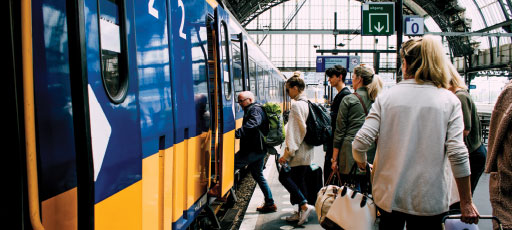
UITP member Lisbon Metro (Metropolitano de Lisboa), which operates a 56 station subway system in Portugal’s capital city, has taken this advice to heart. “We have security guards at fixed locations in the stations and security teams circulating on the trains and stations,” said António Valente, Lisbon Metro’s Head of Security in Lisbon Metro and Chairman of the UITP Security Committee. “As well, we work with a special division of the Portuguese Police and we provide installations for a squad in a central place of the network (Marquês de Pombal station). The police agents make patrols in the network and they are very important to maintain the passengers’ security level. We also have a police agent in our Operational Control Center.”
Training
The importance of training bus drivers (and indeed all transit staff) in more than just vehicle management cannot be overstated. This is why the UITP recommends ‘Behavioral Training’ for mass transit operators, so they learn how to be aware of what is happening on their vehicles (including spotting potential conflicts/incidents as soon as they start to arise), to watch out for suspicious behaviors that may be precursors to premeditated acts of violence and/or theft, and know how to de-escalate conflicts with passengers before they get out of hand. This last point is particularly germane right now, after a year of relentless pandemic stress and fear. “Everyone is feeling really overwhelmed right now and stuck and trapped,” said DiBartolomeo. “This is why attacks on transit staff have been increasing, and it is also why drivers need to learn how to de-escalate conflicts with the public now more than ever before.”
Cybersecurity
Hacker attacks on mass transit systems are nothing new. In 2016, San Francisco’s Municipal Transportation Agency was hit with a $70,000 ‘ransomware attack’ that forced the agency to shut down their ticketing machines, allowing passengers to ride for free until the situation was resolved. Meanwhile, a 2020 cyber-attack on Vancouver’s TransLink similarly disrupted its payment system. In this case, the Egregor ransomware virus that got inside TransLink’s servers caused the agency’s printers to print ‘ransom notes’ that included instructions on paying off the hackers via the ‘Dark Web’. Other hacker targets include train management and switching systems, internal corporate financial data, and “the displays that tell people which train is coming next,” said Hanson.
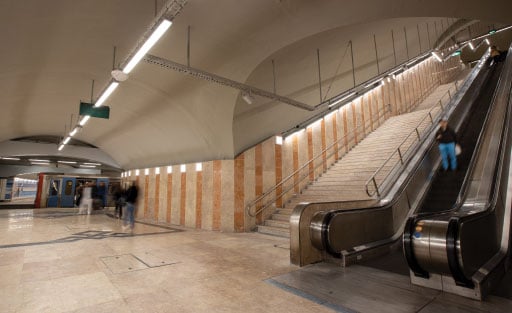
Image courtesy of Metropolitano de Lisboa.
These same hackers could disrupt the video surveillance systems described earlier in this article, which could play a role in blinding authorities during a larger, much more serious terrorist attack. This is why mass transit agencies need to update and maintain their cybersecurity resources, and teach their employees not to open suspicious ‘phishing’ emails that could allow attackers to penetrate their internal networks.
Better Mass Transit Security is Within Reach
If there is a conclusion to be drawn from the people who spoke with TSI for this article, it is that enhanced mass transit security is an achievable goal. Drivers can be kept safer through the use of protective barriers, plus education in crime/threat detection and de-escalation techniques. Drivers and passengers alike can be better protected through integrated security monitoring systems that support real-time dispatch of personnel to incident sites, plus visible and assumed security officers on patrol to keep perpetrators at bay. Terrorist threats can also be mitigated in the same way, while bearing in mind that terrorist do analyze the security routines of their targets and using this consistency to probe for weak spots.
Are these solutions perfect? In a word, no. Many of the reasons that lead to passengers assaulting drivers are linked to poverty, drug abuse, immaturity and emotional self-indulgence, a society that legitimizes anti-government violence against vulnerable people in the name of ‘freedom’, and other social ills that barriers, better monitoring and driver training cannot remedy by themselves. But, at the very least, they can help to make drivers and their passengers safer.
